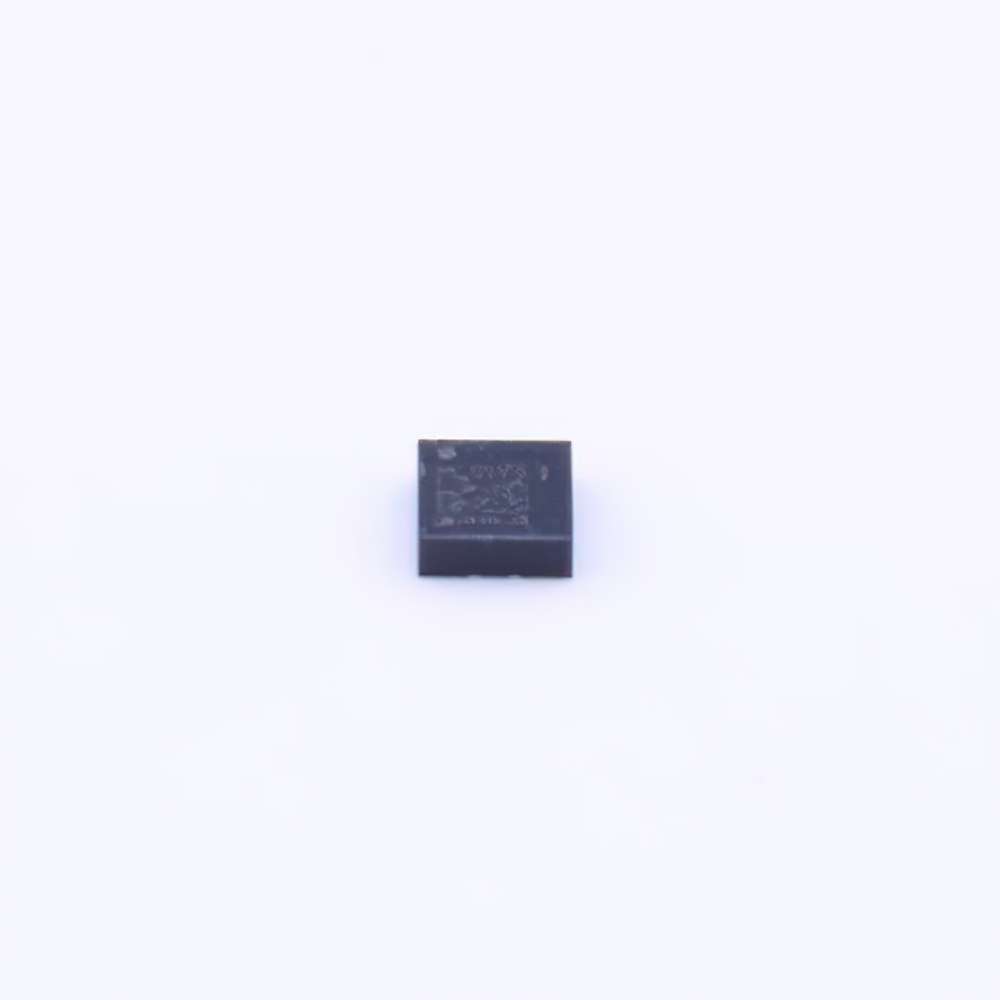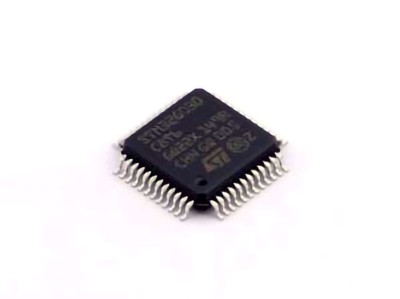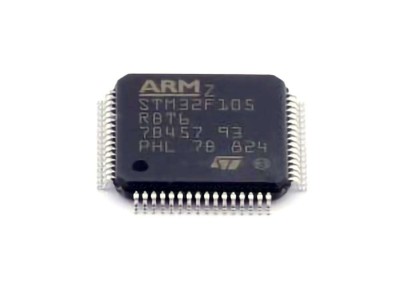
Understanding the LIS2DW12TR and Common Problems
The LIS2DW12TR is a high-performance, low- Power accelerometer from STMicroelectronics designed for applications requiring precise motion and orientation detection. Whether embedded in consumer electronics, industrial systems, or automotive devices, the LIS2DW12TR is widely appreciated for its efficiency and versatility. However, like all electronic components, users may encounter certain challenges when integrating the LIS2DW12TR into their systems. In this section, we’ll discuss some of the most common issues and potential causes, as well as general guidelines for troubleshooting.
1. Power Supply Problems
Power-related issues are one of the most common problems when using accelerometers like the LIS2DW12TR. The Sensor requires a stable voltage supply, typically 1.71V to 3.6V, for optimal operation. If the voltage supply fluctuates or falls outside of this range, the accelerometer may not function correctly, causing erratic readings or complete failure.
Symptoms:
Inconsistent output data
No data output at all
Device power-down or reset behavior
Troubleshooting:
Check power supply voltage: Use a multimeter to verify that the LIS2DW12TR is receiving a stable supply voltage. Ensure the power source is within the recommended range (1.71V to 3.6V).
Test power quality: Consider using a dedicated power supply with low noise, as noise or ripple on the power supply line can affect sensor performance.
Monitor power sequencing: Some systems require careful sequencing of power-up events. Ensure that other components in the system are not interfering with the accelerometer’s power.
2. Communication Errors (I2C/SPI Issues)
The LIS2DW12TR communicates with microcontrollers and other devices via I2C or SPI protocols. Communication issues between the sensor and the connected system can result in lost or incorrect data.
Symptoms:
No data received from the accelerometer
Corrupted or inconsistent data output
Incorrect readings even when no movement is detected
Troubleshooting:
Check wiring and connections: Ensure all connections between the LIS2DW12TR and the microcontroller or processing unit are correct and secure. For I2C, check the SDA and SCL lines; for SPI, ensure correct MOSI, MISO, and SCK connections.
Verify address configuration: If using I2C, double-check the device address to ensure that it matches the address configured in your code. Conflicts with other devices on the same I2C bus can cause communication failures.
Check baud rate and settings: Ensure that the baud rate, clock polarity, and phase settings for SPI or I2C are properly configured. Any mismatch between the sensor’s communication settings and the microcontroller’s settings can lead to communication errors.
3. Sensor Calibration Issues
Accurate readings from the LIS2DW12TR rely on proper sensor calibration. Calibration is essential to compensate for factory variances and ensure that the sensor provides accurate and reliable measurements.
Symptoms:
Incorrect accelerometer readings (e.g., static acceleration, misalignment)
Output values not zero when the device is at rest or in a specific orientation
Troubleshooting:
Perform a reset: Some calibration issues can be resolved by performing a hardware reset or rebooting the sensor. This can often clear any temporary calibration errors.
Calibrate the sensor: Use software tools to perform a full calibration of the LIS2DW12TR. Many development platforms, such as STM32CubeMX, provide built-in calibration features.
Check for physical interference: Ensure that there is no physical interference, such as excessive mechanical stress or magnetic fields, that could impact the sensor’s performance.
4. Inaccurate or Unstable Data Output
Sometimes the LIS2DW12TR may output unstable or inaccurate data, especially when it is exposed to external factors like vibration, temperature variations, or electromagnetic interference.
Symptoms:
Erratic or noisy sensor output
Data jumps or fluctuates significantly even in stable conditions
Failure to detect slow or subtle movements
Troubleshooting:
Apply digital filtering: Implement software-based filtering techniques (e.g., low-pass filters ) to smooth out noisy data. This can help reduce the effects of random noise or high-frequency interference.
Shield the sensor: If the accelerometer is exposed to electromagnetic interference ( EMI ), consider adding shielding or placing the sensor in a more EMI-resistant environment.
Check sensor orientation and placement: Ensure that the accelerometer is properly mounted and oriented, as incorrect placement can affect the sensor’s readings. Additionally, avoid placing the sensor near high-vibration machinery or areas with strong electromagnetic fields.
5. Low Power Consumption and Sleep Mode Issues
The LIS2DW12TR is designed for low-power applications, but issues with sleep modes or power-down states can lead to unintended power consumption or the sensor failing to wake up properly.
Symptoms:
Excessive power consumption
Sensor failure to wake up from sleep mode
Unexpected device resets or shutdowns
Troubleshooting:
Configure the sleep mode settings: Review the configuration of sleep modes in your software. Ensure that the accelerometer is set to wake up at appropriate intervals if continuous measurements are required.
Verify power-down sequences: When the sensor goes into a low-power state, make sure that the transition is smooth and doesn’t result in a system hang or failure to wake up.
Monitor current consumption: Use a power meter to check the current consumption of the LIS2DW12TR and ensure that it is within the expected range during active and idle states.
Advanced Troubleshooting and Solutions for the LIS2DW12TR
In Part 1, we covered some of the basic issues you might encounter with the LIS2DW12TR accelerometer and how to address them. In this section, we will dive into more advanced troubleshooting steps and solutions to ensure that your accelerometer is functioning at peak performance.
6. Handling Temperature Variations
The performance of the LIS2DW12TR accelerometer can be affected by temperature fluctuations, leading to inaccurate readings. Extreme temperatures can cause sensor drift and impact the sensor's sensitivity.
Symptoms:
Accelerometer readings change with temperature variations
Data inconsistencies in high or low-temperature environments
Troubleshooting:
Temperature compensation: Implement software compensation for temperature effects. This involves periodically calibrating the accelerometer or using temperature sensors to adjust the readings.
Proper enclosure: Use an appropriate enclosure to protect the LIS2DW12TR from extreme environmental conditions. A thermally stable environment will ensure more reliable measurements.
Check temperature ranges: Ensure that the sensor is being used within its specified temperature range (-40°C to +85°C). Operating outside of this range can cause permanent damage or unreliable data.
7. Data Saturation and Overflow
When the LIS2DW12TR is exposed to high accelerations or abrupt movements, the sensor’s output may saturate or overflow, resulting in incorrect or unreliable data.
Symptoms:
Output values reach or exceed the maximum allowable range
Accelerometer fails to detect large movements accurately
Data is clipped or truncated
Troubleshooting:
Check measurement range settings: The LIS2DW12TR offers several selectable full-scale ranges (e.g., ±2g, ±4g, ±8g, ±16g). Ensure that the chosen range matches the expected level of acceleration. If the expected acceleration exceeds the sensor's current range, data saturation may occur.
Reduce input acceleration: If your system is subject to extreme accelerations, consider adding mechanical shock absorbers or damping to prevent the sensor from reaching its maximum output.
Use overflow detection: In software, monitor the sensor's output values and check for overflow conditions. Implement checks to reset the sensor or adjust the configuration if necessary.
8. Mechanical Stress and Vibration
Vibration and mechanical stress can cause issues with accelerometer sensors. The LIS2DW12TR is designed to be robust, but improper handling or mounting can still result in erratic behavior.
Symptoms:
Sensor output fluctuates due to mechanical stress
Accelerometer readings change unpredictably under normal operating conditions
Troubleshooting:
Mounting considerations: Properly mount the LIS2DW12TR on a stable surface to avoid mechanical stress. If you need to mount it on a moving or vibrating part, consider isolating it with vibration-damping materials.
Use vibration isolation techniques: In systems with high levels of vibration, such as motors or heavy machinery, use vibration isolation mounts or enclosures to prevent the sensor from being directly exposed to mechanical oscillations.
Check the sensor’s sensitivity: In high-vibration environments, lower the sensor’s sensitivity or apply digital filtering to reduce the impact of vibration on the data.
9. Firmware and Software Configuration Errors
Sometimes, the source of LIS2DW12TR problems lies in the software rather than the hardware. Incorrect configuration settings or software bugs can lead to performance issues, miscommunication, and erroneous data processing.
Symptoms:
Incorrect configuration settings
Software crashes or failure to process sensor data
Misalignment between expected and actual sensor behavior
Troubleshooting:
Double-check sensor settings: Review the initialization sequence and settings in your firmware. Ensure that the accelerometer’s registers are correctly configured for your application.
Update firmware: Check for firmware updates or patches from the manufacturer. Bug fixes and improvements in newer versions of the sensor firmware can help resolve issues.
Implement error handling: Add error detection and handling routines in your software to detect and respond to sensor malfunctions or misconfigurations.
10. Data Integrity and Filtering
Data integrity is crucial when working with accelerometers like the LIS2DW12TR. Unfiltered or improperly processed data can result in inaccuracies that undermine the sensor's effectiveness.
Symptoms:
Erratic or noisy data even in stable conditions
Inconsistent output or failure to track movements accurately
Troubleshooting:
Apply data filters: Use filtering algorithms, such as moving average or low-pass filters, to smooth out noisy data and improve accuracy.
Implement error correction: If possible, apply error correction techniques, such as Kalman filters, to compensate for sensor inaccuracies and noise.
Monitor sensor performance: Periodically check sensor outputs for consistency. If readings deviate significantly from expected values, perform recalibration or check for external interference.
With these troubleshooting strategies and solutions, users can optimize the performance of the LIS2DW12TR accelerometer in their applications, ensuring reliable and accurate data. Whether dealing with power issues, calibration problems, or communication failures, understanding the root causes and applying the right solutions will help you get the most out of your accelerometer system.
If you're looking for models of commonly used electronic components or more information about LIS2DW12TR datasheets, compile all your procurement and CAD information in one place.
( Partnering with an electronic component supplier) sets your team up for success, ensuring that the design, production and procurement processes are streamlined and error-free. (Contact us) for free today.


